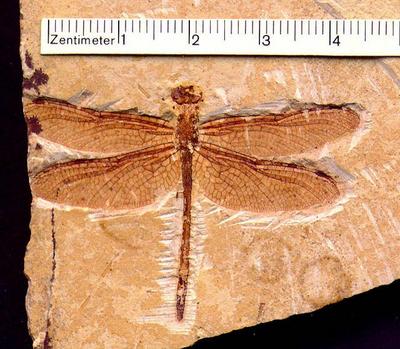Ancient Insects:
The evolution of aerodynamic
flight in insects
"Biological
systems have been optimized through evolutionary pressures over
millions of years,
and offer many examples of performance that far outstrips what we
can achieve artificially."
Dr.
John Young
There are several theories
as to how insect flight evolved. One such theory answers the
question of what use a partial lift would be to an insect by
inspecting a type of stone fly (Plecoptera) which uses its
flightless wings or proto-wings in order to skim more rapidly
across the surface tension of water.
Perhaps the most widely
accepted theory states that insect wings evolved from gill-like
apparatuses which were present in the earliest fossils of
insects. Over time natural selection would have favored
individuals who had larger apparatuses because it would have
increased their jumping distance through gliding.
Unlike the proto-wings in the stone fly theory these apparatuses
would not have generated a force of their own, they would only
have decreased the magnitude of the downward force of gravity
(F=m*a) on the falling insects. This theory is however more
widely accepted because the gill apparatuses are seen in more than
one order of ancient insects.
At one point in time
flying insects grew to sizes of greater then 70 cm. This
exceptional size is believed to have evolved as the result of
higher O2
levels in the atmosphere. This higher Oxygen
concentration allowed for animals like insects who have a
diffusion respiration system to have larger respiration
tracts and consequently larger size. This larger size
also allowed for ancient insects to be more predator then
prey.

Image of fossilized
odonate
http://science.naturkundemuseum-bw.de/files/images/bechly_2ab_1_libelle.jpg
evolution of insect flight
